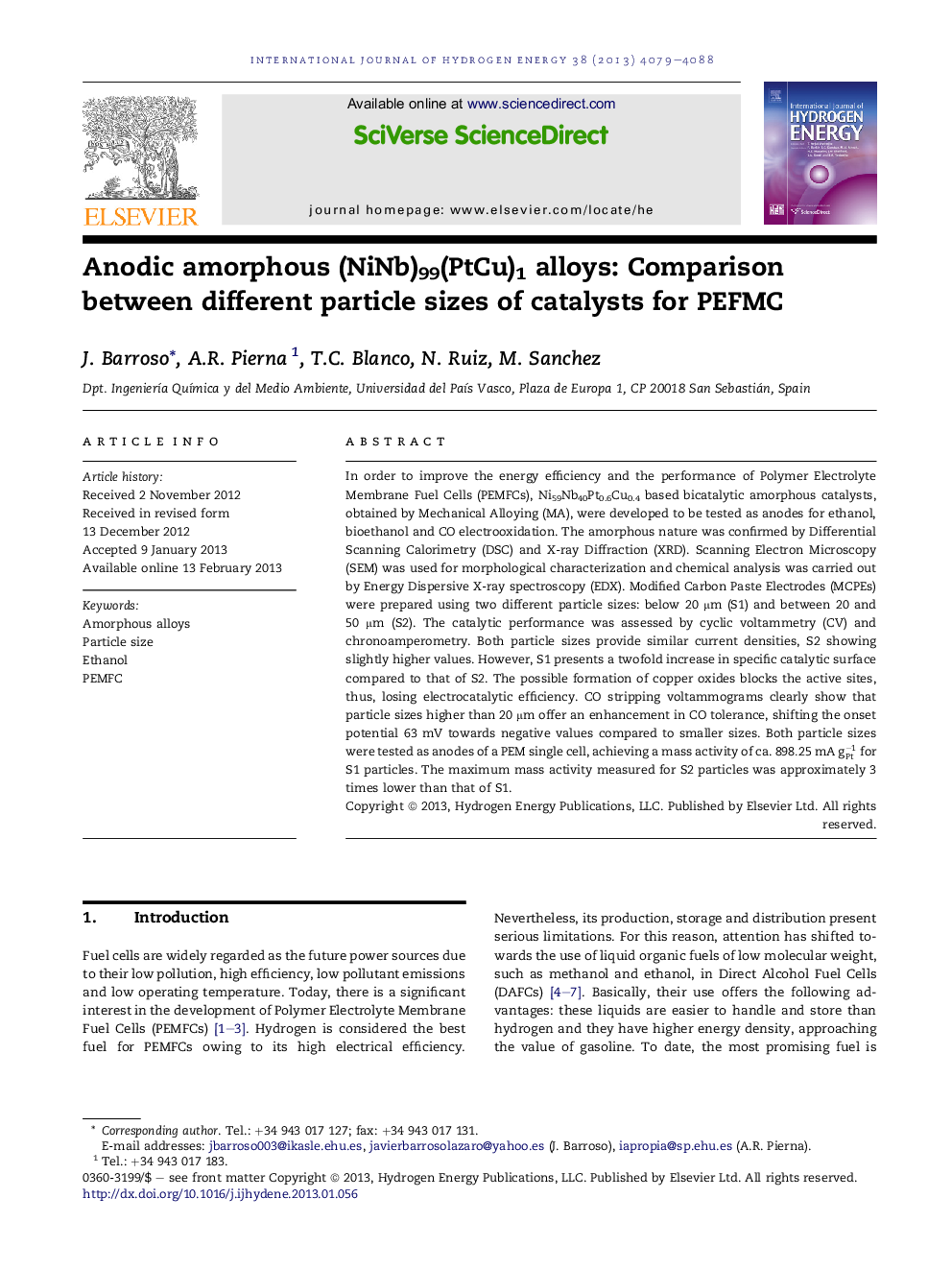| Article ID | Journal | Published Year | Pages | File Type |
|---|---|---|---|---|
| 1281872 | International Journal of Hydrogen Energy | 2013 | 10 Pages |
In order to improve the energy efficiency and the performance of Polymer Electrolyte Membrane Fuel Cells (PEMFCs), Ni59Nb40Pt0.6Cu0.4 based bicatalytic amorphous catalysts, obtained by Mechanical Alloying (MA), were developed to be tested as anodes for ethanol, bioethanol and CO electrooxidation. The amorphous nature was confirmed by Differential Scanning Calorimetry (DSC) and X-ray Diffraction (XRD). Scanning Electron Microscopy (SEM) was used for morphological characterization and chemical analysis was carried out by Energy Dispersive X-ray spectroscopy (EDX). Modified Carbon Paste Electrodes (MCPEs) were prepared using two different particle sizes: below 20 μm (S1) and between 20 and 50 μm (S2). The catalytic performance was assessed by cyclic voltammetry (CV) and chronoamperometry. Both particle sizes provide similar current densities, S2 showing slightly higher values. However, S1 presents a twofold increase in specific catalytic surface compared to that of S2. The possible formation of copper oxides blocks the active sites, thus, losing electrocatalytic efficiency. CO stripping voltammograms clearly show that particle sizes higher than 20 μm offer an enhancement in CO tolerance, shifting the onset potential 63 mV towards negative values compared to smaller sizes. Both particle sizes were tested as anodes of a PEM single cell, achieving a mass activity of ca. 898.25mAgPt−1 for S1 particles. The maximum mass activity measured for S2 particles was approximately 3 times lower than that of S1.
► Amorphous Ni59Nb40Pt0.6Cu0.4 alloys were studied as anodes in PEMFCs. ► Catalysts of different particle sizes were obtained by mechanical alloying (MA). ► Copper oxides limit the anodic process for smaller particles. ► Assessment of the catalytic activity was performed in a PEM single cell for HOR.
